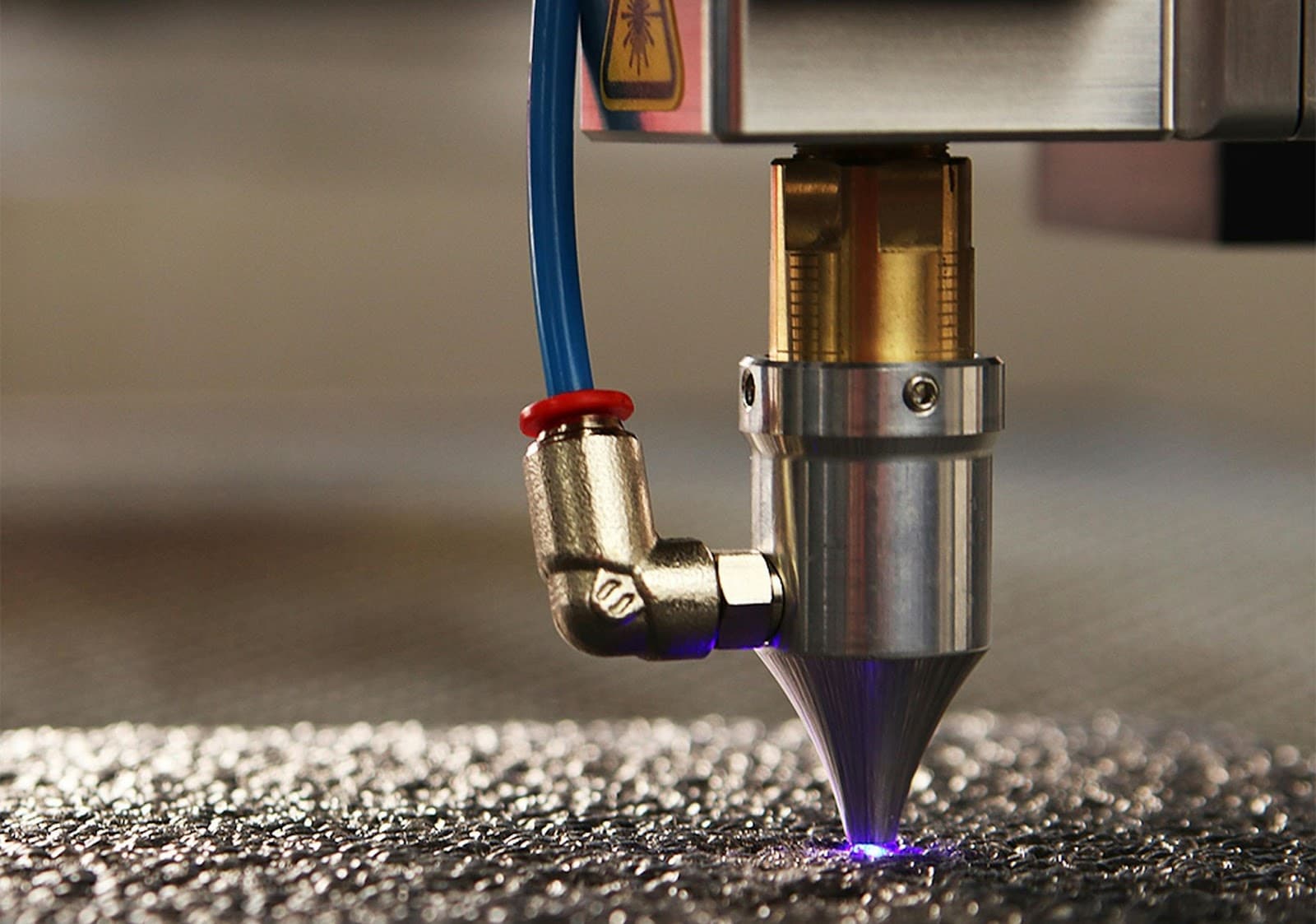


Laser cutting machines represent one of the standout innovations in today’s technological era. These machines can cut through various types of materials, including metal, wood, acrylic, fabric, and plastic, using laser beams. The results are clean and precise cuts.
For many people, especially those in industries that use laser cutting machines, it is important to understand the technologies behind these machines. Knowing this helps us appreciate the complexity of manufacturing products that rely on laser cutting machines.
The laser source is the most critical component of a laser cutting machine, as it generates the laser beam that cuts the material. Generally, there are three types of laser sources used in laser cutting machines.
CO2 lasers are the most commonly used laser sources in material processing industries. These lasers emit infrared beams with a wavelength of 10.6 micrometers.
CO2 lasers are effective for cutting various materials, including wood, and their operational costs are relatively low. However, their larger size and the need for additional gases like CO2 for operation are notable disadvantages.
Fiber lasers use optical fibers as the laser source. The wavelength produced by fiber lasers is shorter than that of CO2 lasers, around 1,064 nanometers.
Fiber lasers offer high-quality beams, resulting in smooth and precise cuts. Additionally, they are smaller in size compared to CO2 lasers. However, the operational costs of fiber lasers are relatively high.
The third type, solid-state lasers, use solid materials as the medium to amplify the light or laser. Commonly, the material used is neodymium-doped yttrium aluminum garnet (Nd
Unlike CO2 and fiber lasers, the wavelength of solid-state lasers is flexible. This type of laser can be used not only for cutting but also for welding and engraving.
) crystal.
Laser sources work by stimulating atoms in the amplifying medium, which can be gas, crystals, or optical fibers. The medium is energized by electricity or light, which then emits light.
This emitted light is the laser itself. The laser is reflected between two mirrors in the laser source, with one mirror having a partially transparent section through which the laser exits and cuts the material.
In addition to the laser source, the optical system plays a critical role in laser cutting machines. Components in the optical system focus the laser beam onto the material being cut.
The main function of the focusing lens is to gather the scattered laser beams and concentrate them into a single point on the material’s surface. Generally, there are three types of lenses used in laser cutting machines: single lenses, double lenses, and aspheric lenses. The type of lens is selected based on the material type and thickness.
There are three types of mirrors commonly used: flat mirrors, concave mirrors, and convex mirrors. Each type has a different role in directing the laser beam. The mirror system directs the laser from the source to the focusing lens, which then directs it to the material's surface.
Since laser cutting machines rely on heat during the cutting process, they require an effective cooling system. This system prevents components, particularly the focusing lens, from overheating and being damaged. Typically, a liquid cooling system is used to regulate the temperature of the components.
The CNC system (Computer Numerical Control) directs the laser beam to the material’s surface with precision. Essentially, CNC acts as the link between the design created by humans and the cutting process performed by the machine.
The process begins with the creation of a digital design using computer software. This design is then converted into numerical code, or G-Code, which can be read by the CNC.
The G-Code is sent to a special computer that controls the CNC. The controller interprets the code into instructions for moving the machine. The CNC controller sends signals to the machine’s motor to move the laser head, directing the laser to the material.
One of the advantages of CNC is its precision in cutting and the ability to replicate the same design multiple times. CNC can also be used for various types of materials and improves efficiency by automating the cutting process.
Another important system in laser cutting machines is the exhaust system. During the cutting process, small particles such as smoke are produced.
The exhaust system is essential for maintaining the performance of the laser cutting machine by preventing smoke from interfering with the focusing lens and other optical components. It also ensures the air quality for the machine operator.
There are four main components of the exhaust system in laser cutting machines: the hood, fan, filter, and ducting. The hood collects smoke and particles produced during the cutting process. The fan draws the air, the filter captures small particles, and the ducting carries the air outside.
The explanation above highlights the various technologies in laser cutting machines, including the laser sources and how they work, the optical system, the CNC system, and the exhaust system. Each component plays a vital role and is equally important.
Bodor, one of the popular laser cutting machine brands, is a solid choice. PT Synergis Industrial Utama is the official distributor of Bodor products in Indonesia.